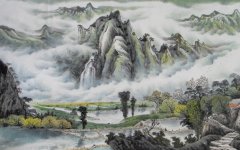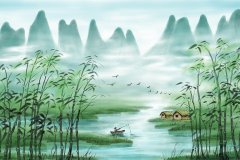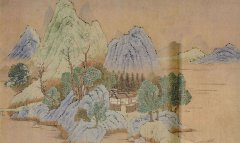旅游攻略手抄报制作指南与普通话的普及历程
今日所见的旅游攻略手抄报,不仅是技术的展现,更是时代变迁和生活方式的映射。让我们一起如何制作一份生动的旅游攻略手抄报,同时回顾普通话的普及历程,感受其对我们生活的影响。
一、旅游攻略手抄报制作指南
手中的旅游攻略手抄报,如同一个小小的旅行世界,展现着各地的风情与魅力。选取你最向往的旅行地,如中国的秀美山河或澳大利亚的异域风情,展开你的创作之旅。
1. 精选主题:你可以选择中国旅游指南手记,或者澳大利亚旅游指南手写报告等主题。
2. 丰富内容:详细介绍旅游景点、美食推荐、住宿攻略等,让读者感受旅行的乐趣。
3. 生动图片:加入生动的图片和插画,使手抄报更加吸引人。
4. 旅行故事:分享你的旅行故事,让读者感受你的旅行经历。
二、普通话的普及历程
普通话,作为中华民族的共同语言,是我们国家各民族的交流桥梁。让我们一同回顾普通话的普及历程,了解它如何融入我们的生活。
普通话的普及,可以追溯到清末。学者吴汝纶在访日时,受到启发,建议中国进行普通话教育,以统一语言。此后,普通话逐渐受到重视。
1955年,全国文字改革会议明确了普通话的定义,随后普通话的普及工作逐渐展开。普通话的普及,为我国的语言交流提供了便利,促进了各民族的融合。
普通话的普及过程中也面临着一些挑战。有人因为各种原因不愿意使用普通话,其中包括从众心理、趋同心理等。但在一些地方,如石家庄的一个山村,人们积极学习普通话,以便与游客顺畅交流,推动旅游业的发展。
三、旅游攻略手抄报内容导览
一份精彩的旅游攻略手抄报,需要丰富而吸引人的内容。以下是制作旅游攻略手抄报的一些建议:
1. 制定旅行计划:确定你的旅行路线,以此为出发点设计手抄报。
2. 挖掘旅途中的亮点:了解目的地的重点景点和传说故事,增加手抄报的趣味性。
3. 留意旅途中的意外发现:一些不经意的小景点和经历同样值得分享。
4. 引入文化元素:除了旅游景点,还可以介绍当地的文化、历史、风俗等。
5. 互动环节:设置互动环节,如填写旅行心愿卡、分享旅行心得等,增加手抄报的互动性。
旅游攻略手抄报制作与普通话的普及历程一样,都是时代变迁的产物。让我们在创作旅游攻略手抄报的过程中,感受普通话的魅力,分享旅行的快乐。Creating an Engaging Handbook on Xi'an Travel and Environmental Protection
Section 1: Introduction to Xi'an
Xi'an, the capital of Shaanxi province, is a pivotal city in Western China, boasting a rich cultural heritage and abundant tourism resources.
Section 2: Highlight of Xi'an Tourism - The Terracotta Warriors
The Terracotta Warriors of Emperor Qin Shi Huang's Mausoleum, a world奇迹, is one of Xi'an's most visited attractions. Learn about its historical background, features of the site, and tips for your visit.
Section 3: Delve into Xi'an's Food Culture
Experience the culinary delights of Xi'an, such as Yangrou Paozao (lamb and beef bubble tea), Luchao (pork head), and other local delicacies.
Section 4: Crafting an Excellent Travel Guide
Highlight the unique aspects of your destination, like natural wonders, cultural heritage, etc.
Provide practical travel tips on the best time to visit, transportation options, and accommodation recommendations.
Add a personal touch by sharing travel stories and experiences.
Make your handbook visually appealing with photographs and maps.
A Journey Through Olympic History
The journey of the Olympics began in 1896 with the first modern Olympics in Athens, Greece. Since then, the number of participating athletes, nations, and events has steadily increased. By the 2000 Sydney Olympics, there were over 10,000 athletes from 199 nations participating in the festivities. Let's delve into the challenging journey of the ancient Olympics.
The Ancient Olympic Journey for Spectators
For ancient Olympic spectators, the journey was no easy feat. Imagine traveling from Athens, traversing the rugged Peloponnese, and following the pilgrimage route under the scorching Mediterranean sun, walking or relying on mules for weeks to reach Olympia. For those from overseas colonies, the sea journey was even more arduous. Upon arriving at Olympia exhausted, the real test had only just begun. With limited infrastructure, only a few foreign missions and officials could stay at the modest hotel; the common nobility had to make do with tents.
Garbage Issues in Our Daily Life
Garbage classification is an essential environmental action that separates garbage based on its recyclability and reusability, transforming it into resources through proper disposal and recycling. The classification of urban domestic waste varies depending on the composition of garbage and local resource utilization practices. For instance, in Germany, garbage is generally classified by paper, glass, and metal types, while Australia divides it into compostable garbage, recyclable garbage, and non-recyclable garbage. Despite 14 years of garbage classification, the issue remains challenging due to random placement or insufficient disposal sites causing inconvenience in residential areas.
The daily volume of garbage we generate is immense. In well-managed areas, most garbage undergoes harmless treatment like sanitary landfills, incineration, or composting. However, in many places, it is simply dumped or landfilled causing pollution to soil and groundwater. Harmless treatment of garbage is costly, ranging from hundreds to thousands of yuan per ton depending on the treatment method. Without proper control over resource consumption and waste generation, the consequences can be catastrophic.
Currently, domestic waste is generally classified into four categories: recyclable waste, kitchen waste, hazardous waste, and other waste. Common treatment methods include integrated utilization, sanitary landfills, incineration for power generation, and resource recovery.
The Spring Season: A Time of Revival
Spring is the most vibrant season of the year. In the Northern Hemisphere, it spans from March to May, while in Australia's Southern Hemisphere counterpart it falls between September to November. Spring brings moderate weather conditions with warm temperatures and frequent rainfall leading to the revival of all things living. The spring season is also known by various names like Yangchun or Fangchun indicating its lively essence. Associated with spring are also traditions like spring outings or踏青 which have a long history in China dating back to pre-Qin times when people would go out to admire nature in springtime. The practice was particularly popular during the Tang Dynasty with many literary figures leaving behind poems about their spring travels as testaments to this custom’s enduring charm. This practice embodies a love for life and a desire to embrace nature’s beauty at its peak season which is reflected in ancient traditions that have been observed ever since ancient times as a true testament to spring’s essence as expressed by Bai Juyi in his poem ‘Spring’. In terms of agricultural calendar terms such as Li Chun (the beginning of spring) have marked spring’s arrival since the Qin Dynasty indicating a time where nature thrives with warm temperatures birds singing blooming flowers increased sunshne longer days increased rainfall leading to an uptick in在这个充满独特魅力的地方,你会遇到许多珍稀生物,如鸭嘴兽、针鼹、考拉和袋鼠。它们是这个地方的独特标志,吸引着无数游客前来探访。
在澳门的旅行中,法师庙是必游之地。这座已有460年历史的寺庙是澳门三大佛教寺庙之一,主要供奉妈祖,也被称为天后娘娘。这里承载着深厚的历史意义,是了解澳门文化的好去处。天地水上舞蹈表演、影院和龙环葡韵也是游客们的必游之地。尤其是影院中的亚洲最高摩天轮,已成为澳门的新地标。
来到RuadoCunha,这里的美食让人流连忘返。中西美食汇聚一堂,如水蟹粥、猪包、木糠布丁等,让美食爱好者们大呼过瘾。而国际影院度假村则是一处集酒吧、餐厅、购物、住宿和多种娱乐设施于一体的度假胜地,拥有超过3000间的豪华套房,是游客们打卡的必选之地。
在自驾游的过程中,做好旅游攻略至关重要。根据多年的公路旅行经验,明确几个主要的旅游目的地,如云南的油菜花和水梯田、内蒙古额济纳的胡杨林等。在进行线路设计时,应结合时间限制来安排路线。安全永远是第一位的,所以在设计线路时应考虑交通安全。出发前,务必准备好充气泵、牵引绳、充电宝和防滑链等必备物品。在制作手抄报时,可以记录旅程中的故事和风景照片。
对于房车旅行前的准备,要在房车启动前做好水、电、油的相关准备,并带上生活用品以节省费用和环保。在旅途中,节约水电是每位房车爱好者必须面对的课题。房车的净水箱容量有限,需格外注意节水的使用。对于用电方面,烹饪时间越短越好。厕所和盥洗台可在服务站等临时停靠点使用,减少在房车内使用水资源。在旅行购物时,避免不必要的消费,选择物价和消费相对较低的地区旅行更加明智。
还有专门的旅行攻略App可以帮助你更好地掌握旅行信息。这款App能随时掌握机票特价的动态,提供广泛的国内航线选择和安全且价格实惠的住宿服务。流量消耗低,运行流畅,功能丰富,包括特价提醒、价格趋势等,让你轻松掌握旅行中的每一分花费。
在这片神奇的土地上,无论是自驾还是房车旅行,都有无尽的美丽景色等待着你的。从独特的生物到古老的寺庙,从美食到购物,这里的一切都将为你留下深刻的印象。下载一款好的旅行攻略App,做好充分的准备,开始你的冒险之旅吧!古代旅行者的独特魅力与旅行攻略手册制作
在浩瀚的历史长河中,古代的旅行者以其坚韧不拔的精神和独特的旅行方式,为我们留下了丰富的文化遗产。那些被称为驴友的古人,如诗仙李白、高僧玄奘、文人苏轼等,他们的旅行充满了诗意与冒险。让我们一同走进他们的世界,感受那份独特的魅力。
在古代,长途旅行对于普通人而言是一项重大的挑战。行前的准备仪式十分隆重,如占卜、选吉日吉时等,体现了人们对未知旅途的敬畏与期待。早在殷代至晋代,求教于有经验之人成为出行前不可或缺的一步。到了明代,随着专门的旅行书籍的盛行,旅行者有了更为详细的指南。阅读如《台游草》等经典游记,能够激发人们对旅行的热情与决心。
古代驴友的行李清单颇为讲究,除了生活用品、床上用品,还有熟艾、大黄等中药以及夜壶等必备物品。资深驴友还会携带笔墨、砚、酒器、茶灯等工具,为旅途增添了不少乐趣。他们多选择背家奴或与志同道合的朋友结伴而行,在旅途中相互照应,共同分享旅行的喜悦与挑战。
住宿方面,古代旅行者有着多样的选择。从邮局、客栈到民宿,从寺庙、道观到野外露营或与船工共度夜晚,每种住宿方式都有其独特的体验。对于那些想要深入了解当地风土人情的旅行者来说,选择民宿是绝佳的体验方式。而那些选择水路旅行的人,或许是为了追求别样的旅行体验,或是为了节省开支,在船上度过旅程也是一种不错的选择。
在那个遥远的时代,人们的旅行方式虽与现代截然不同,但同样充满了魅力和乐趣。想象一下,古代的旅行者身处其中,徒步穿越山川大河,体验别样的风土人情。他们的旅行故事成为了后世传颂的佳话,为我们留下了宝贵的文化遗产。
今天,我们重新梳理古代旅游攻略,不仅是为了了解古代人的旅行方式,更是为了感受那份独特的魅力和勇气。让我们一同走进那个世界,古代旅行者的独特魅力,为现代的旅行注入更多的灵感与启示。无论是对于热爱旅行的朋友,还是对于历史文化的爱好者,这都是一次难得的之旅。




